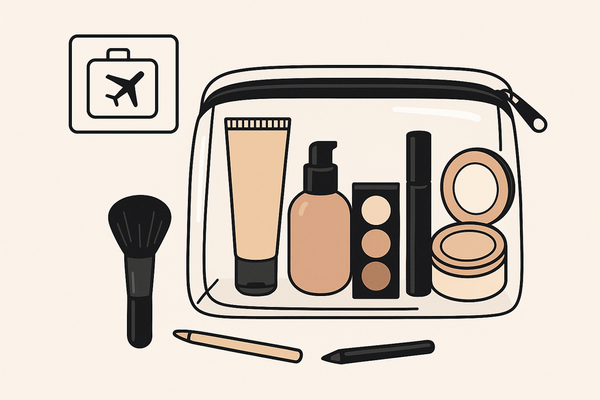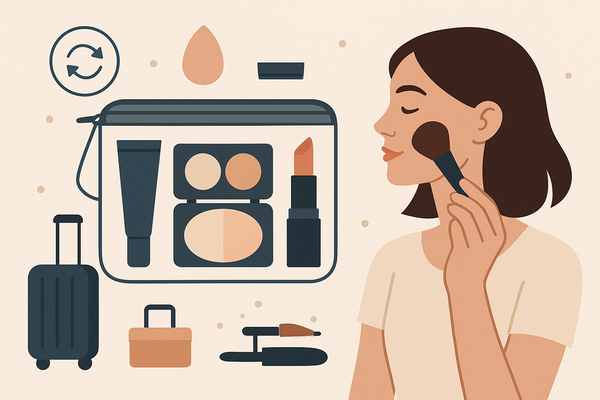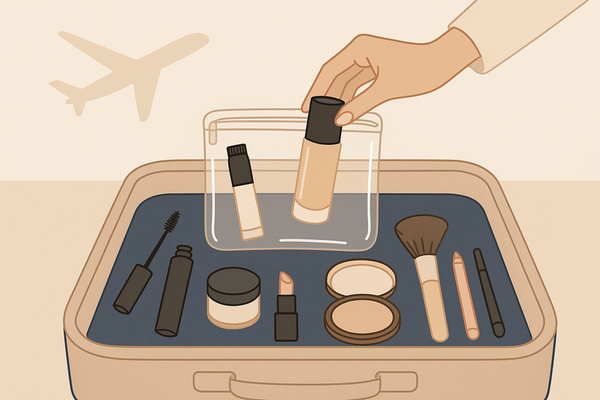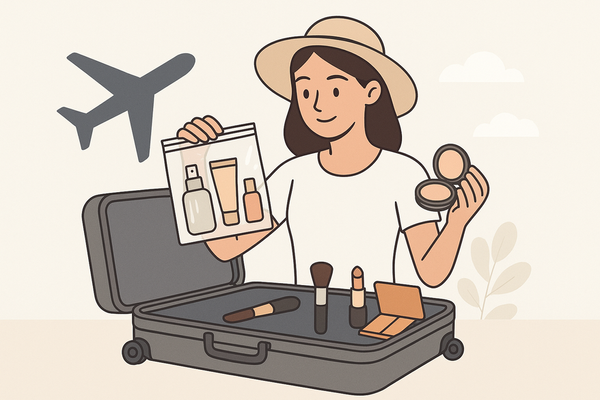Clean Beauty Makeup: Top Sustainable Trends for Ethical Glam
Explore clean beauty makeup with insights on vegan brands, eco-friendly innovations, and cruelty-free cosmetics driving sustainable beauty trends.
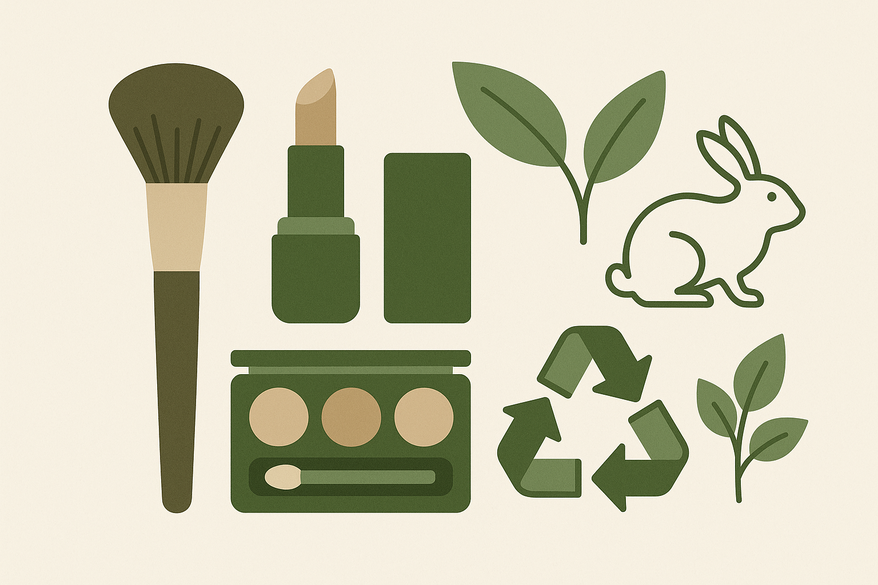
Estimated Reading Time: 8 minutes
Key Takeaways
- Non-toxic formulations and transparent labeling prioritize health and environmental safety.
- Vegan makeup brands avoid all animal-derived ingredients and carry third-party certifications.
- Eco-friendly packaging features recyclable, refillable, or biodegradable materials.
- Cruelty-free cosmetics eliminate animal testing through recognized standards like Leaping Bunny.
- Emerging trends include blockchain tracking, biodegradable formulas, and global regulatory shifts.
Table of Contents
- Introduction to Clean Beauty Makeup
- Understanding Clean Beauty Makeup
- Overview of Sustainable Beauty Trends
- Exploring Vegan Makeup Brands
- Embracing Eco-Friendly Makeup
- Spotlight on Cruelty-Free Cosmetics
- Comparing and Evaluating Clean Beauty Makeup Choices
- Future Outlook on Sustainable Beauty Trends
- Conclusion of Clean Beauty Makeup
Introduction to Clean Beauty Makeup
Clean beauty makeup refers to cosmetic products formulated without ingredients suspected or shown to harm human health or the environment. It emphasizes non-toxic, transparent formulations and sustainable practices. In recent years, consumers have demanded greater safety and clarity in personal care, making health, environmental protection, and animal welfare top priorities.
This post analyzes the major sustainable beauty trends and offers guidance for ethical consumer choices in clean beauty makeup.
Understanding Clean Beauty Makeup
Products in this category meet strict formulation criteria: free from potentially harmful substances and rich in plant-based or mineral ingredients.
Ingredients to Avoid
- Parabens
- Phthalates
- Synthetic fragrances
- Sulfates
Benefits of Clean Beauty Makeup
- Reduced exposure to toxic chemicals for healthier skin
- Gentle, hydrating ingredients such as aloe vera, shea butter, and hyaluronic acid
- Ideal for sensitive skin thanks to fewer irritants
- Transparent labeling empowers informed consumer decisions
- Environmental consciousness through sustainable packaging
Many users notice less redness and improved skin hydration after switching to clean beauty makeup. Brands often display full ingredient lists, fostering trust and confidence.
For an AI-powered way to analyze your clean beauty choices, try Makeup Check AI.
Overview of Sustainable Beauty Trends
The industry is shifting toward eco-friendly makeup and ethical consumerism. Key developments include:
Eco-Friendly Materials
- Recycled, recyclable, or biodegradable packaging
- Glass compacts, paper tubes, and bamboo components
Reduced Single-Use Plastics
- Refillable systems and magnetic pans
- Reusable pods to cut down on excess waste
Ethical Ingredient Sourcing
- Fair-trade, organic farming of botanicals
- Transparent supply chains to ensure worker welfare
Virtual sampling technologies like virtual makeup try-on reduce packaging waste and eliminate the need for physical testers.
Market growth data shows a significant uptick in sales of green cosmetics. Consumers increasingly seek products aligned with zero-waste and responsible beauty values.
Exploring Vegan Makeup Brands
Vegan makeup brands exclude all animal-derived ingredients such as beeswax, lanolin, or carmine, appealing to animal-welfare advocates and eco-conscious consumers.
What Defines Vegan Makeup Brands
- Excludes all animal-derived components
- Relies on plant waxes, mineral pigments, and safe synthetic alternatives
- Often carries third-party vegan certification
Notable Vegan Makeup Brands
- Tower 28: Plant-based waxes and mineral pigments in lip gloss and blush
- Pacifica Beauty: Fruit-derived colorants and eco-synthetic emulsifiers
- Milk Makeup: Innovates with vegan squalane, alternative clays, and silicone-free primers
Each brand pairs clean beauty credentials with cruelty-free assurances. Third-party logos like The Vegan Society ensure authenticity.
Embracing Eco-Friendly Makeup
Eco-friendly makeup considers the full product lifecycle, from ingredient sourcing to disposal, aiming to reduce carbon footprint and waste.
Key Eco-Friendly Makeup Practices
- Recycled, recyclable, or compostable packaging materials
- Low-impact manufacturing methods: waterless powders, renewable energy-powered facilities
- Refillable containers: magnetic palette systems and pump pods
Labels such as “100% post-consumer recycled plastic” or “biodegradable packaging” help consumers identify sustainable options.
Spotlight on Cruelty-Free Cosmetics
Cruelty-free cosmetics guarantee no animal testing of raw ingredients or finished products, relying on alternative safety assessments.
Certifications & Industry Standards
- Leaping Bunny: Comprehensive cruelty-free audit and ban on new animal testing
- PETA’s Beauty Without Bunnies: Verifies brands don’t engage in animal tests in any form
Consumer & Industry Benefits
- Builds brand trust and ethical assurance
- Advances in vitro testing, computational toxicology, and organ-on-a-chip technologies
- Global regulations in regions like the EU and India enforce animal-testing bans
Brands with these certifications lead the sustainable beauty movement by adopting alternative testing methods.
Comparing and Evaluating Clean Beauty Makeup Choices
Consider key features, pros, and cons when choosing between vegan, cruelty-free, and eco-friendly products.
Key Features, Pros & Cons
- Vegan Products – Pros: No animal-derived ingredients, allergy-friendly; Cons: Synthetic substitutes may require scrutiny
- Cruelty-Free Cosmetics – Pros: Ethical assurance; Cons: Not always non-toxic or eco-friendly
- Eco-Friendly Makeup – Pros: Sustainable packaging; Cons: Higher price points for refillable systems
Example Claims to Watch
- “100% Vegan”
- “Leaping Bunny Certified”
- “Packaging made from post-consumer recycled plastic”
Guidelines for Selecting Sustainable Makeup
- Read full ingredient lists and avoid banned chemicals
- Verify third-party certifications for vegan, cruelty-free, and eco-friendly claims
- Choose refillable or low-waste packaging when possible
- Use online tools like shade match online guide to avoid overbuying
Future Outlook on Sustainable Beauty Trends
The future promises enhanced transparency, advanced green chemistries, and stricter regulations.
Predicted Developments
- Blockchain-enabled supply-chain tracking for full provenance
- Biodegradable formulas that break down naturally post-use
- Expanded global bans on harmful ingredients and animal testing
Consumer Tips for Staying Ahead
- Use resources like INCI databases and the Think Dirty app
- Adopt low-waste habits: opt for refills and recycle packaging
- Support brands with published impact reports
- Follow certification bodies (Leaping Bunny, EWG, The Vegan Society) for updates
Conclusion of Clean Beauty Makeup
Clean beauty makeup is reshaping the cosmetics industry through non-toxic formulations, sustainable packaging, and ethical standards. We’ve explored:
- Definition and benefits of clean beauty makeup
- The rise of vegan makeup brands and plant-based formulas
- Eco-friendly makeup practices across product lifecycles
- Cruelty-free cosmetics certifications and alternatives to animal testing
- A comparison framework for choosing between vegan, cruelty-free, and eco-friendly products
- Future trends and practical consumer tips for ongoing sustainability
Take action today: scrutinize ingredient lists, seek certified products, and support brands that align with your values. Together, we can foster an ethical, sustainable future for beauty.
For more in-depth research and brand directories, refer to:
- Clean Beauty and Why It's Important
- What Is Clean Beauty and Why Does It Matter
- The Truth Behind Clean Beauty and Skin Health
- Clean Makeup by Emogene & Co
- Benefits of Clean Beauty
FAQ
What makes a product "clean beauty"?
Clean beauty products are formulated without ingredients known or suspected to harm human health or the environment, with transparent labeling and sustainable practices.
How do I verify vegan and cruelty-free claims?
Look for third-party certifications such as The Vegan Society logo for vegan products and Leaping Bunny or PETA’s Beauty Without Bunnies for cruelty-free assurance.
Are eco-friendly makeup products more expensive?
Eco-friendly brands may have higher price points due to sustainable sourcing and packaging costs, but long-term benefits include reduced waste and environmental impact.

